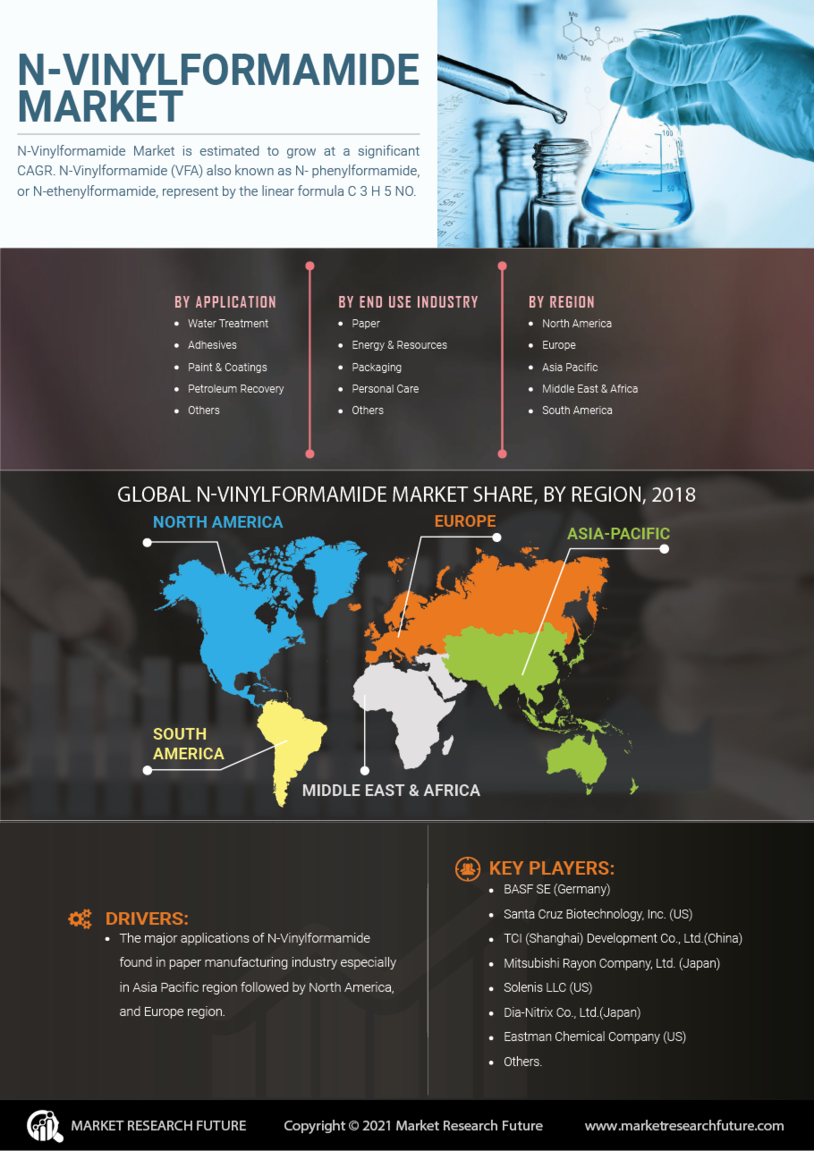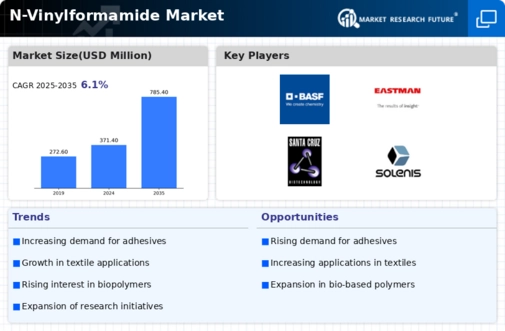Market Growth Projections
The Global N-Vinylformamide Market Industry is projected to experience substantial growth over the coming years. With a market size expected to reach 371.4 USD Million by 2024 and 785.4 USD Million by 2035, the industry is poised for significant expansion. The anticipated compound annual growth rate (CAGR) of 7.05% from 2025 to 2035 underscores the increasing interest and investment in N-Vinylformamide applications across various sectors. This growth is indicative of the compound's versatility and its potential to meet the evolving needs of industries worldwide.
Growth in Textile Applications
The Global N-Vinylformamide Market Industry is significantly influenced by its utilization in the textile sector. N-Vinylformamide serves as a key ingredient in textile finishing agents, enhancing properties such as water repellency and stain resistance. As the global textile market expands, particularly in developing regions, the demand for innovative textile treatments is expected to rise. This growth is reflected in the overall market projections, with estimates suggesting a market size of 785.4 USD Million by 2035. Consequently, the textile industry's evolution is likely to bolster the demand for N-Vinylformamide, fostering its market growth.
Rising Environmental Regulations
The Global N-Vinylformamide Market Industry is also shaped by increasing environmental regulations that favor sustainable and eco-friendly materials. As governments worldwide implement stricter regulations on chemical emissions, manufacturers are compelled to adopt greener alternatives. N-Vinylformamide, with its relatively lower environmental impact compared to traditional solvents, appears to be a favorable option. This shift towards sustainability is likely to enhance its adoption across various sectors, including construction and automotive. The anticipated growth in these sectors may further stimulate the demand for N-Vinylformamide, aligning with global sustainability goals.
Increasing Demand in Adhesives and Coatings
The Global N-Vinylformamide Market Industry is experiencing a surge in demand driven by its applications in adhesives and coatings. This compound is known for enhancing adhesion properties and improving the durability of coatings. As industries prioritize high-performance materials, the need for N-Vinylformamide is likely to grow. For instance, the global adhesives market is projected to reach 371.4 USD Million by 2024, indicating a robust growth trajectory. This trend suggests that manufacturers are increasingly incorporating N-Vinylformamide to meet stringent performance standards, thereby propelling the market forward.
Technological Advancements in Polymer Chemistry
The Global N-Vinylformamide Market Industry is benefiting from ongoing technological advancements in polymer chemistry. Innovations in synthesis methods and formulations are leading to enhanced performance characteristics of N-Vinylformamide-based products. These advancements enable manufacturers to create more efficient and versatile materials, which are increasingly sought after in various applications, including coatings and adhesives. As a result, the market is projected to experience a compound annual growth rate (CAGR) of 7.05% from 2025 to 2035. This growth trajectory indicates a promising future for N-Vinylformamide as industries continue to seek high-performance solutions.
Expanding Applications in the Pharmaceutical Sector
The Global N-Vinylformamide Market Industry is witnessing growth due to its expanding applications in the pharmaceutical sector. N-Vinylformamide is utilized in drug delivery systems and as a polymeric excipient, enhancing the solubility and bioavailability of active pharmaceutical ingredients. As the global pharmaceutical market continues to evolve, with increasing investments in research and development, the demand for innovative drug formulations is likely to rise. This trend suggests a growing need for N-Vinylformamide, further solidifying its position in the market as a critical component in pharmaceutical applications.

















Leave a Comment